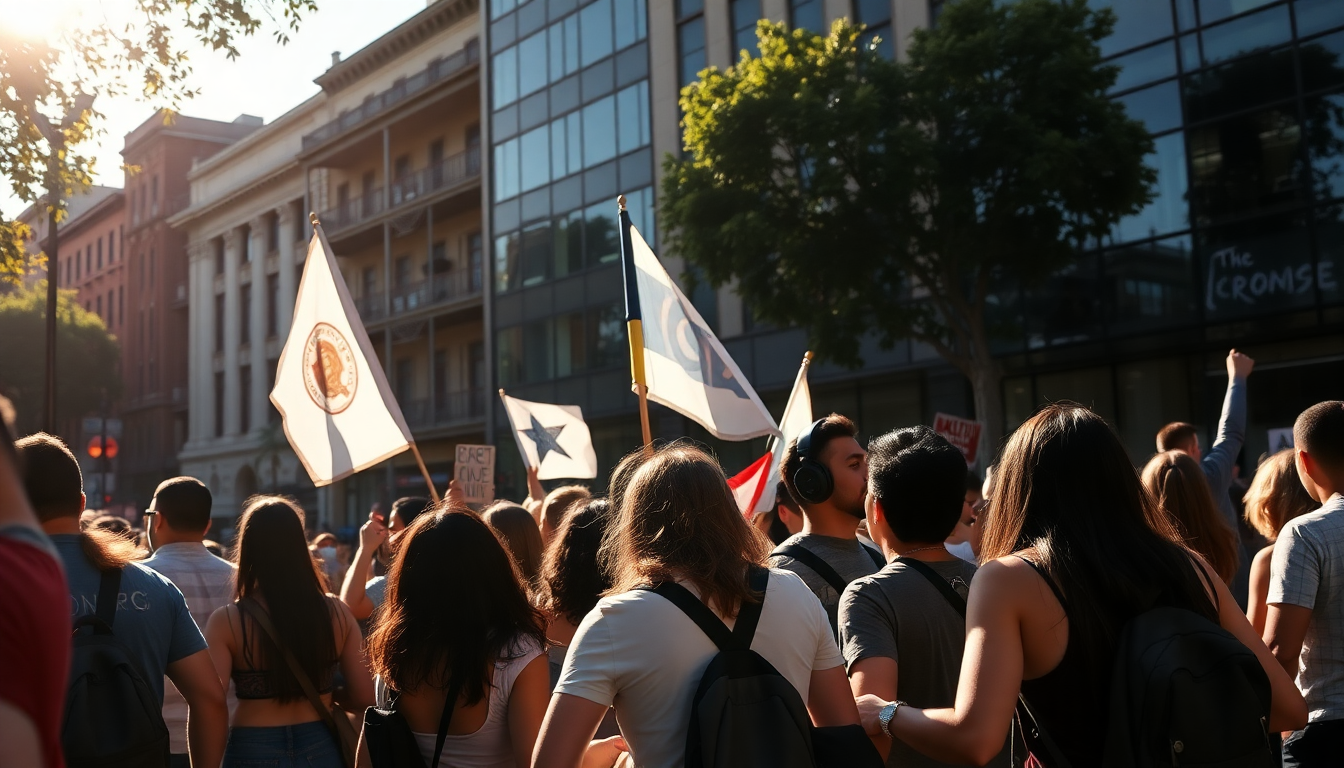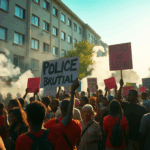Table of Contents
In recent weeks, the protests in Los Angeles against U.S. Immigration and Customs Enforcement (ICE) have intensified dramatically, catching the attention of both local law enforcement and government officials. This wave of unrest is not just a local issue; it speaks volumes about the ongoing tensions surrounding immigration policies in a city that proudly stands as a sanctuary for undocumented immigrants.
With violence on the rise, it’s crucial to understand what these protests mean for the broader narrative of immigration in America today. How do these events reflect the changing landscape of our society?
Current Situation and Official Responses
Recently, Los Angeles District Attorney Nathan Hochman, U.S.
Attorney Bill Essayli, and California Highway Patrol Southern Division Chief Chris Margaris held a press conference to discuss new charges related to these escalating protests. To date, the Los Angeles Police Department has made an astonishing 575 arrests, a clear indication of the scale of unrest and the measures authorities are taking to keep the peace.
The protests ignited in response to ICE raids targeting undocumented immigrants, leading to violent clashes between demonstrators and law enforcement. During a significant protest, 38 individuals were detained for charges like curfew violations and resisting arrest. The situation is further complicated by national protests coinciding with local demonstrations, adding fuel to the fire in downtown Los Angeles.
What drives people to take to the streets in such numbers?
In response to the rising violence, authorities have resorted to tear gas and other crowd control measures. Conflicts have escalated to the point where protesters have been reported throwing projectiles and even setting fires.
The LAPD has documented injuries among its officers, highlighting the serious nature of these confrontations. One particularly alarming incident involved an undocumented immigrant charged with attempted murder after allegedly throwing a Molotov cocktail at police—an example of the real dangers law enforcement faces during these protests.
Community Impact and Public Sentiment
These protests have sparked deep divisions within the community regarding immigration policy and raised pressing questions about public safety and the effectiveness of law enforcement strategies. Many community members feel frustrated by the ICE raids, viewing them as direct attacks on families and local residents. On the flip side, there are those who argue for the necessity of these actions to uphold the law and ensure safety. How can a city balance these conflicting viewpoints?
The designation of Los Angeles as a sanctuary city adds another layer of complexity. It positions the city as a refuge for undocumented immigrants while inevitably placing it at odds with federal immigration laws. This duality has ignited intense debates among residents and local leaders about the best way forward, with calls for both reform and enforcement echoing throughout the community. Can a compromise be reached that respects both the law and the needs of vulnerable populations?
As tensions continue to simmer, the involvement of local government and community organizations will be pivotal in addressing these issues. By fostering dialogue between law enforcement, immigrant communities, and advocacy groups, there’s potential for a more constructive conversation that could ultimately help ease the underlying tensions. What role can each of us play in shaping a more inclusive community?
Looking Ahead: Potential Outcomes and Future Trends
As we look to the future, the direction these protests take will likely hinge on several factors, including public sentiment, law enforcement strategies, and possible policy changes at state and federal levels. The situation remains fluid, and as Los Angeles grapples with these challenges, the broader implications for immigration policy in the United States are significant.
If protests continue to escalate, we may witness increased involvement from local leaders and activists advocating for changes in immigration policy and law enforcement practices. On the other hand, if authorities manage the situation effectively and enhance communication with the community, we could see a de-escalation of tensions and a more cooperative approach to immigration issues. What will it take for us to come together and find common ground?
Ultimately, the unfolding events in Los Angeles serve as a microcosm of the national debate over immigration, reflecting the complexities and challenges that define this critical issue in American society today. How will history remember this moment, and what lessons can we learn as we navigate these tumultuous waters?





